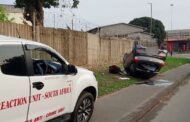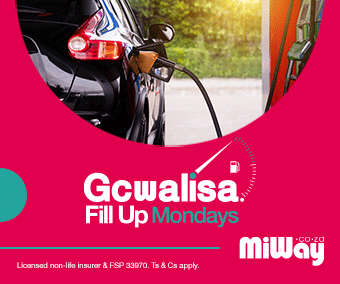When you’re driving after dark, every second counts. Reduced visibility can slow your reactions, obscure hazards, and turn what should be a smooth, routine journey into a high-risk challenge that demands extra focus and care.
Moreover, driving at night presents an increased risk of being involved in a car accident. Knowing how exactly low light affects your vision and adjusting your driving habits can be a real lifesaver. Let’s explore this further.
Vision Challenges After Sundown
Once the sun sets, your vision loses some of its superpowers – depth perception, colour recognition and peripheral vision are compromised after sundown. The following are all common nighttime challenges.
1. Night Blindness
Night blindness happens when your eyes struggle to adjust after dark, making even basic shapes and obstacles fade into the shadows. At night, hidden hazards may lurk in the shadows, and obstacles can pop up without warning.
Tip: Don’t skip those eye exams. Regular checkups are recommended to catch night-vision issues early.
2. Astigmatism
Astigmatism warps your vision. Whether you’re up close or looking into the distance, shapes and lines can appear stretched or fuzzy. Oncoming headlights at night can flare into bright rays, scattering light across your vision – this glare can be blinding for some drivers.
Tip: With a fresh prescription, glare disappears, and your vision stays sharp every time!
3. Glare from Oncoming Headlights
When oncoming headlights blast you, you’re left blinking in the dark. Age can make eyes more sensitive to glare, and eye sensitivity could also be increased by conditions like cataracts or dry eye.
4. Eye Strain and Fatigue
Staring down a pitch-black road for too long turns your eye muscles into overworked marathoners. Dry vision, throbbing headaches, and lagging reflexes are your eyes’ way of saying, “I need a break”!
Why Reaction Time Slows at Night
The stakes are raised after dark, making everyday driving tougher. Here’s why.
Reduced Visibility
In low light, you miss visual cues, so obstacles can sneak up on you. Even well-lit areas can cast misleading shadows, making it harder to judge distances accurately. Driving at night distorts what you see, so your reactions tend to slow down.
Delayed Recognition
Shadows and glare make it harder to spot objects or read road signs quickly. This delay can shave crucial seconds off your reaction time – just when you need it most. Especially if your dashboard lights or interior lighting are too bright, your eyes will need longer to adjust.
Slower Decision-Making
When everything blends together, your brain needs more time to sort it out, making quick decisions a bit tougher. That extra mental load increases the risk of hesitating or making the wrong move.
Fatigue
Driver tiredness means slower reactions and the danger of tiny, unplanned naps. Microsleeps can last just a few seconds – enough to miss a bend, brake light or pedestrian. The older the driver gets, the more frequent these lapses happen.
Simple Tips to Stay Safe After Dark
Noticing glare or eye fatigue at night? Here are easy tips on how to adapt and drive safely.
1. Adjust Your Speed
Slow down after dark and maintain a two-second (three-car) gap to ensure you’ve enough time to stop safely. Lower speeds give your eyes and brain more time to register and react to unexpected hazards and reduce the risks that come with low visibility.
2. Use Your Lights Wisely
Keep your windshield and headlights clean to reduce glare, dip your high beams for oncoming or passing cars, and dim your dashboard lights to protect your night vision. If your car has automatic headlights, ensure they’re actually on.
3. Schedule Regular Eye Exams
Schedule an eye exam at least once a year and more frequently if you suspect symptoms of night blindness or astigmatism. Even small changes in vision can affect how quickly your eyes adapt to low light or bright headlights.
4. Manage Fatigue
Take a break every 90 minutes on long night drives. If you feel drowsy or struggle to focus on the road, switch drivers or pull over safely to rest. Yawning, heavy eyelids or drifting across lanes are early signs it’s time to stop and refocus.
5. Improve Your Environment
Apply anti-reflective coatings to your glasses or windshield to slash interior glare. Also, dim your dashboard and interior lighting to reduce distracting reflections.
6. Know When to Avoid Driving
If you’re sick, on medication, or exhausted, it’s best to wait until you’re fully alert before getting behind the wheel. Impaired focus or slowed reflexes can turn minor hazards into big risks after dark. Sometimes, the best decision is to avoid driving altogether.
Make Sure You Have Good Cover
When the sun sets, your depth perception blurs, colours dull, and your side vision takes a nap, so night driving demands extra focus. However, even with all the right precautions, driving at night still increases your risk of an incident.
For protection in case the unexpected happens, explore different car insurance policies, compare cover options side by side, and opt for a plan that fits your needs and budget. You can also get a car insurance quote online in under ten minutes.
Disclaimer:
This article offers general information about driving at night and provides tips to help you stay safe on the road after dark.
Always conduct your own research and consult a certified financial advisor to select the best insurance policy for your needs.
Get a quote for affordable comprehensive cover with fixed premiums*, reducing excess*, and top-tier service. T&Cs apply.
Please be Alert, Sober and Defensive on the Roads Tonight!!
Advice for Safe Driving at Night https://t.co/IPJFGhKxIr #ArriveAlive #NightDriving@Dotransport @TrafficRTMC @SAPoliceService pic.twitter.com/mBpHSx9Dln
– Arrive Alive (@_ArriveAlive) July 24, 2025

























